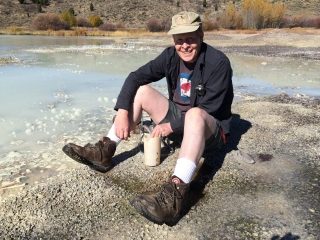Field, laboratory, and modeling studies to examine fracture stimulation and fluid flow within Enhanced Geothermal Systems
Presenter
Dr. Patrick Dobson
Geological Staff Scientist
Energy Geosciences Division Lawrence Berkeley National Laboratory
Abstract
The development of enhanced geothermal systems (EGS) has the potential to dramatically increase the deployment of geothermal resources in the US and around the world. Such resources are far more abundant and widespread than conventional hydrothermal systems, but require technological advancements in drilling, characterization, monitoring, and reservoir creation and sustainability for widespread development of such resources to be commercially viable. The EGS Collab project is an effort on the part of the US Department of Energy's Geothermal Technologies Office to establish intermediate-scale (~10 meter) field test beds coupled with stimulation and interwell flow tests to provide a basis to better understand fracture stimulation methods, resulting fracture geometries, and processes that control heat transfer between rock and stimulated fractures. This suite of well constrained field experiments will also facilitate the use and validation of coupled process numerical models to capture fluid and heat flow, water-rock interactions, and geomechanical processes that result in enhanced fracture fluid flow. This presentation will review field, laboratory, and modeling results related to the first series of experiments, focused on hydraulic stimulation of fractures, in a testbed developed on the 4850 level, and will briefly discuss ongoing work to develop a new testbed on the 4100 level to conduct similar experiments focused on shear stimulation of existing fractures. The EGS Collab team consists of scientists and engineers from ten US DOE National Laboratories, seven universities, and three companies.
